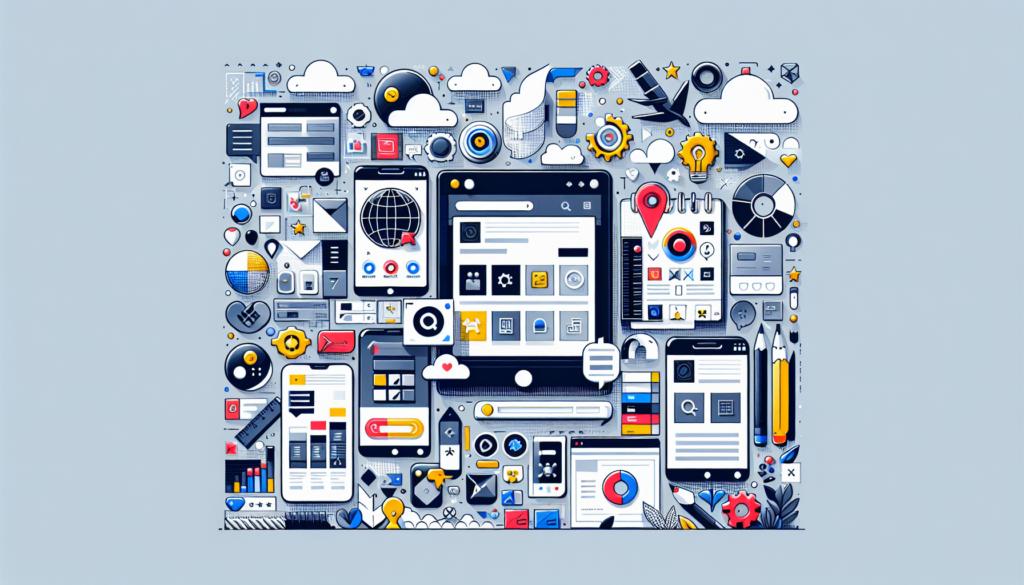In the current digital age, where information overload overwhelms and attention spans diminish, minimalist design emerges as an essential philosophy in the creation of websites. This approach is not just aesthetic, but a strategic response to the need to improve user experience (UX) by simplifying the interface and enhancing usability. We will delve into the technical principles of web minimalism, analyze case studies, and project its evolution, offering a comprehensive outlook for the specialist seeking to optimize website performance through intelligent simplification.
Principles of Minimalist Design
Theoretical Foundations
Minimalist design focuses on the maxim “less is more,” originated in modern architecture, now applied to the digital experience. It is based on three fundamental pillars: simplicity, clarity, and emphasis. These pillars combine to reduce the user’s cognitive load, increase legibility, and improve interaction with the website.
- Simplicity: This principle translates into the use of few design elements, opting for the essential. Simplicity in web design refers to the elimination of anything superfluous that does not add significant functional or aesthetic value.
- Clarity: Clarity focuses on making elements easily identifiable and understandable. A design is clear when the user can navigate intuitively through the interface without requiring additional instructions.
- Emphasis: Placing emphasis means highlighting the most important elements of the page, guiding the user toward the primary information or action. This is achieved through contrast, space, and visual hierarchy.
Advanced Technical Aspects
From a technical viewpoint, minimalist design involves a solid understanding of white space, typography, and color. These elements are manipulated to create a visual hierarchy that directs the user’s attention and underscores the importance of the content.
- White space: This is not merely an empty space, but an active component used to separate and structure content. Proper management of white space improves readability and promotes a more relaxed user experience.
- Typography: The choice of typography in a minimalist design is crucial. Clean and readable fonts are preferred, with well-balanced weight and size. Often, minimalism is accompanied by a reduced font palette to maintain visual consistency.
- Color: Minimalist color schemes tend to be monochromatic or use a limited spectrum of colors, sometimes with chromatic accents to highlight key elements such as calls to action (CTA).
Application Practices
When implementing a minimalist design, it is essential to carry out usability testing to ensure that simplicity does not sacrifice functionality. UX analysis tools such as heat maps or A/B testing are essential for evaluating the performance of the design and making adjustments based on real data.
Relevant Case Studies
To illustrate the effectiveness of minimalism in web design, it is relevant to analyze successful examples. An emblematic case could be the redesign of Apple‘s website. The company adopted a minimalist approach that allowed it to highlight its products and facilitate navigation. Focus is placed on high-quality images and precise descriptions, with very controlled use of color and typography, designed to create a distraction-free user journey.
Another case study is the Medium platform, which design prioritizes text content with wide margins and white space, carefully selected typography, and a stripped-down interface that promotes a focused and distraction-free reading experience.
Projections and Future Innovations
Looking to the future, minimalist design could evolve through the integration of emerging technologies such as artificial intelligence (AI) and machine learning (ML). These technologies can enable dynamic adaptation of the interface to adjust to individual user preferences, further simplifying the experience based on previous behavior.
Augmented reality (AR) and virtual reality (VR) also offer a fertile field for minimalism, where simplicity of design is key to avoiding sensory overload and enhancing immersion in these mediums.
In conclusion, minimalist design is not a mere aesthetic whim, but a deliberate strategy to focus on usability and user experience. As we move toward an increasingly saturated digital world, minimalism stands out as one of the most effective responses for designers and developers committed to creating clean, intuitive, and user-focused interfaces.

